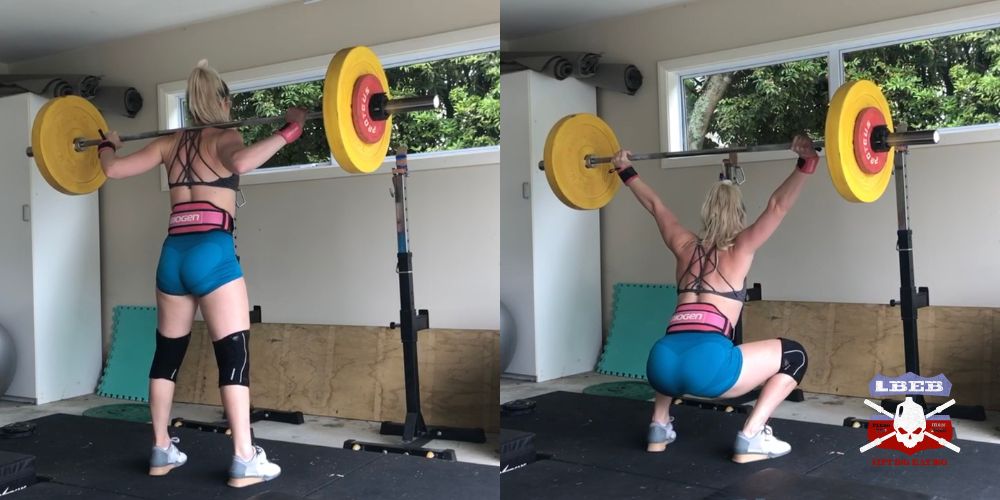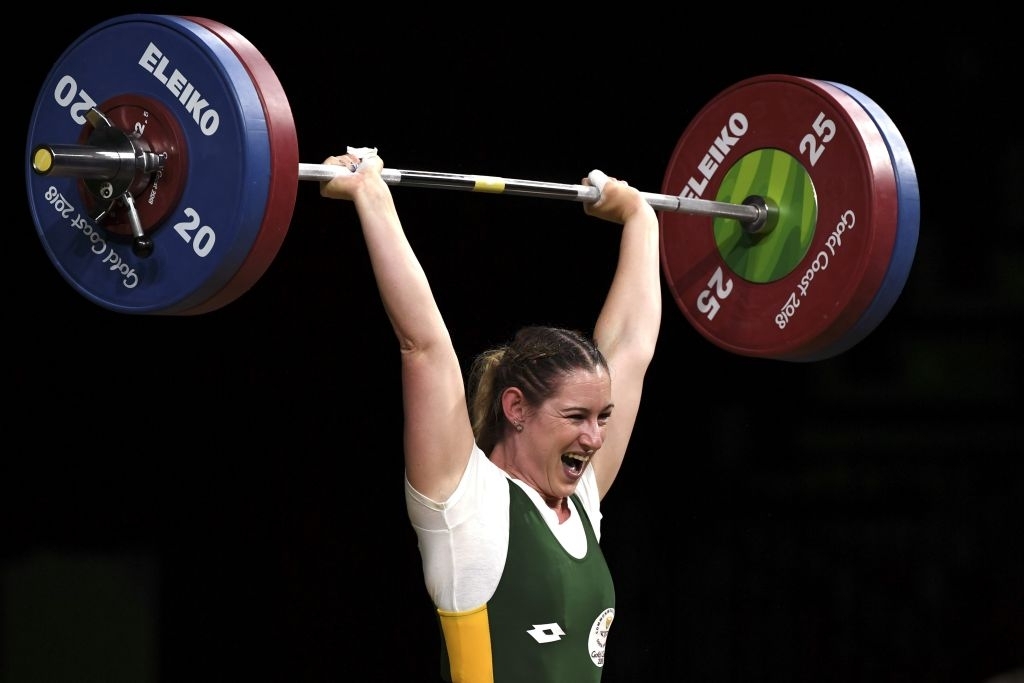Many athletes battle with the technical side of the snatch. Breaking the movement down into segments helps you understand how to move correctly. But it also enables you to understand the mind-body connection in different parts of the lift.
The main difference between the drop snatch and snatch balance comes from the legs. The snatch balance initiates with a dip and drive while the drop snatch does not.
Suppose you are looking for a movement to help you improve your speed under the bar when to punch or even build your overhead strength. The drop snatch and snatch balance can help with all of these.
Table of Contents
What Is A Drop Snatch?
The drop snatch is an assistant exercise to help improve the snatch. It’s a movement where the bar will start from the back behind the neck. You will have a snatch-width grip, standing in the tall position, with elbows placed under the bar to help you drive the bar up straight.
You will start the drop snatch from a static position, keeping the core tight and keeping the upper back engaged. Take a deep breath and aggressively drive yourself under the bar, simultaneously pushing up against the bar. You will slightly jump out with your feet, landing in a full squat position, arms locked overhead.
You will then stand back up in the tall position, keeping the arms locked out overhead before lowering the bar back down.
The drop snatch will be done with a lightweight because there will be no leg drive or momentum before you drop under the bar.
It’s a great exercise when you want to work on speed under the bar, punching up aggressively against the bar, and building confidence when dropping under the bar.
What Is A Snatch Balance?
The snatch balance is another assistant exercise for the snatch. Similar to drop snatch, the bar will start on your back behind the neck in a snatch-width grip.
You will start the movement by dipping straight down and driving back up into the fully extended position; you will then push yourself under the bar and simultaneously punch up against the bar while slightly jumping out with the feet and landing in a squat position.
Keep the core tight and the torso upright when dipping down and driving the bar up overhead. You can go much heavier in the snatch balance than the snatch if you are an experienced lifter.

The snatch balance is also an excellent exercise to work on speed under the bar. It also helps build that confidence to handle heavy-weight overhead.
If you are a beginner-level athlete, stay on a lighter weight and work on moving well under the bar before focusing on going heavy and not doing the movement correctly. At the end of the day, you want to improve your snatch with these assistant exercises.
Drop Snatch vs. Snatch Balance Key Differences
Static Start vs. Dipping & Driving With The Legs
The drop snatch has a fixed start, and you will drop under the bar while simultaneously pushing yourself under the bar. No momentum builds up from the legs in this movement hence the name drop snatch.
With the snatch balance, you will first perform a slight dip and drive with your legs before driving your body under the bar and then simultaneously pushing yourself under the bar.
The Amount Of Weight You Can Handle Overhead
The drop snatch will be performed with a much lighter weight and often with the bar only or slightly heavier; I recommend around 30-40% of your 1RM snatch.
With the drop snatch, you have a static start, thus no momentum to build up before you do the movement, and hence why you cannot handle very heavy weight.
With the snatch balance, you can handle a much heavier weight than the drop snatch because you have that dip, drive with the legs, and build momentum before driving yourself under the bar. Some athletes can snatch balance up to 110% of their 1RM snatch because of the extra leg drive.
Technique & Speed vs. Strength Building
Even though both movements can be used for speed and technique, the drop snatch is specifically for teaching you how to get under the bar faster with good technique.
In contrast, the snatch balance is much more of a strength builder exercise because of how much weight you can handle with this exercise overhead.
When Should You Drop Snatch vs. Snatch Balance

Even though this movement both have different goals, they are also very similar and can be used interchangeably.
For example, if you are a beginner-level athlete, both the drop snatch and snatch balance could be used to learn the fundamentals of driving yourself under the bar while focusing on aggressively punching up against the bar and catching the bar in the squat.
Both the drop snatch and snatch balance can be used as a barbell primer to warm up for the snatches; however, if you plan to use the snatch balance for strength building, I recommend doing it after your classical lifts.
Both movements can be used as a post-lifting accessory to work on speed.
It also depends on your goal for the exercise. If you want to give your nervous system a rest and not go too heavy, I will focus on drop snatch because it will force you to go a lot lighter and work on speed and technique.
Summary
The drop snatch is a great exercise for speed, technique, and aggression under the bar. At the same time, the snatch balance is excellent for aggression, confidence, and strength building. Both of these are great accessory movements for the snatch.
You cannot go very heavy in the drop snatch. For example, most athletes can do up to about 40% of their 1RM snatch, whereas with the snatch balance, you can perform the lift at almost 110% of your 1RM snatch.
The most significant technical difference between the drop snatch and snatch balance is with the drop snatch, you start from a static position and aggressively drop yourself under the bar, whereas, with the snatch balance, you will use your legs to dip and drive up before driving yourself under the bar.

